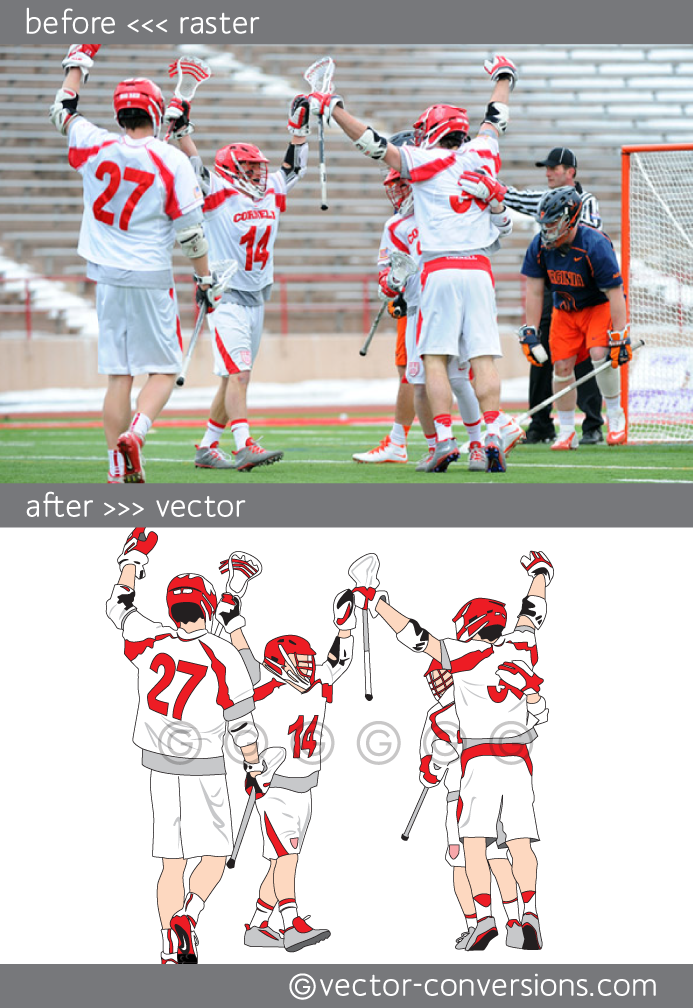Photo to Vector Conversion
Manual vectorization with soft color blends Here is an example of a recent vectorization from photo to vector (raster to vector). This drawing was for screen printing and, for this particular project, it didn't have to be drawn using only vectors. In addition to drawing with vectors, some vector graphics programs also have tools that allow you to use pixel-based, raster (non-vector) elements such as soft color blends & shading/highlights. A graphic that is created with a vector drawing program but also includes pixel-based smooth color blends and soft shading is not a 100% vector graphic, or a true vector graphic; it contains both raster and vector elements. See Raster vs Vector Photographs are raster graphics made with pixels: a multitude of different color pixels create a realistic image. Vector graphics are drawings made with objects: lines and curves that create shapes. When a photo is vectorized, it means a drawing of the photo is being made and, i n mo

